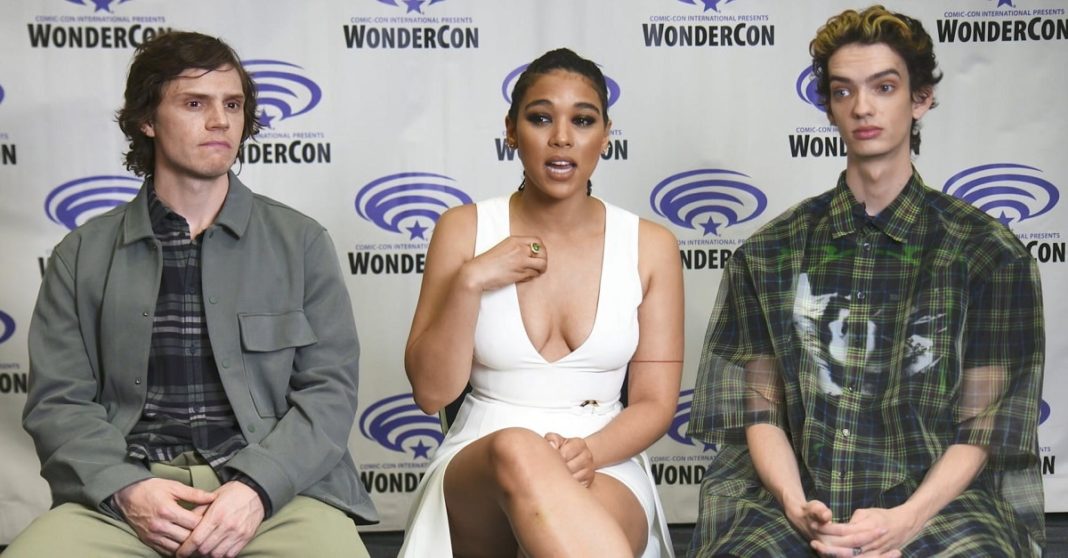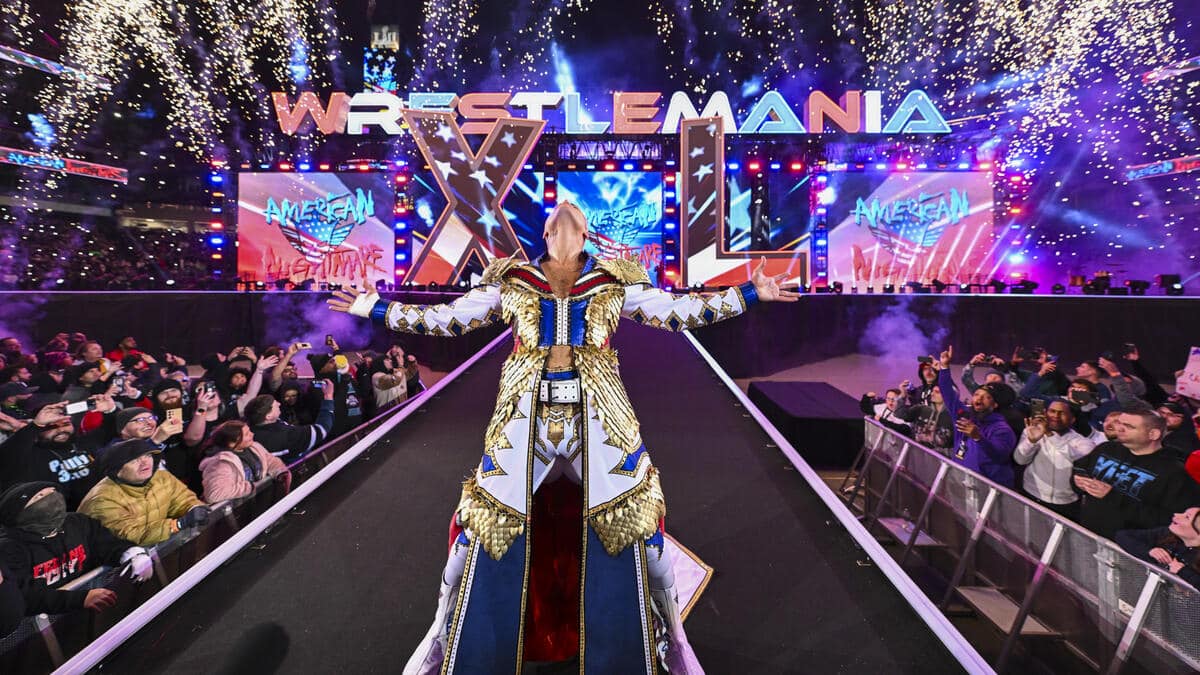WonderCon 2019 continues at a fast and furious pace. Join Heidi MacDonald for day two of our daily convention video coverage. Today, Heidi mourns the lost of a trailblazing creator and an innovative businessman. She then transitions into a discussion about how our industry has rapidly grown and changed over the last few decades.
Get a first look at our upcoming interviews with the cast of Dark Phoenix and the voices/creators behind the new DC Super Hero Girls cartoon on Cartoon Network. And while you’re here, check out some of our other WonderCon coverage, including a fantastic write up about how to Kickstart your comic. We also helped celebrate Batman’s 80th birthday and learned Tom King’s pitch for the Batman series was only seven words long.
Coming up, later this morning we’ll have a special look at some upcoming Magic: the Gathering content. We’ll also feature more information about DC’s publishing slate, IDW’s Transformers lineup, and more.
You won’t want to miss this, so stay tuned to the Beat! And subscribe to our YouTube channel today!








How comics have grown up: Heidi is no longer the only woman at these conventions.
I’m looking at that picture with no idea who those three people are. Why doesn’t the cutline or copy identify them? The only person named in the copy is Heidi, and none of them are her. Are they the people we’re mourning? Or celebrating for having grown up?
You have to watch the video to learn who they are.
Euno, stop mansplaing before you get in trouble.
Comics have grown up in the sense that they aren’t a “boys club” of “good ol’ boys” but it a club for marginalized groups–of women, poc, and queerfolk.
“a club for marginalized groups–of women, poc, and queerfolk.”
I think you’re confusing comics with public radio.
Most of the readers are still straight white men. They’re just not the ONLY readers anymore. They actually never have been, but other kinds of readers tended to be invisible — and much more “marginalized” than they are today.
Any artistic medium mirrors the time that it is in as much as it changes that time. Comics has done that. When I was growing up the idea of DC Superhero Girls couldn’t have been floated, let alone realized. Yes the women could be independent and such, but men were still the main heroes. You could have Tara in Herculoids, but Zandor was still in charge.
What she might mean is that comic book fans are now in the third generation. The original fans of the marvel age now have grandchildren, it’s part of the main stream now. That has some down points. Marvel’s embrace of fascism in most of their storylines, DC’s endless attempts at reboots and the constant hunger for sales figures not to mention super high prices have driven away a lot of fans I wonder how many of the people at Wonder Con still buy comics or are there more for the panels and the cosplay?
DC superhero girls has nothing to do with comic books. Comic books don’t make DC as much money as movies, video games and merchandising. DC superhero girls is about tapping into a market of upper class parents who are always looking for age appropriate content (role models) for their kids (not enough role models irl so that is why they are turning to corporate entertaimment)
“. That has some down points. Marvel’s embrace of fascism in most of their storylines,” That can be traced down to the grim and gritty superhero trend that sought to portray superheroes in a realistic manner. In reality, most superheroes would be dictators and would abuse their power. Warren Ellis reminded everyone of this with his runs on Stormwatch and Authority. Warren Ellis’ Stormwatch, and Authority runs made it okay for superheroes to play judge, jury, and executioner as long as they were doing it for a just cause…like killing a Republican president. A lot of comics creators were influenced by the Authority or simply wanted to tell stories that were merely symbolically about political revolution.
This goes way beyond a particular company or but it is merely a sign of the times. If one feels an entire government is illegitimate then violent revolution whether it’s in the name of the proletariat or nationalism becomes justified. The embrace of fascism is “people feeling alienated from the government of their society to the point that imposing one’s wishes by force becomes desirable” and is not restricted to any particular political ideology.
“When I was growing up the idea of DC Superhero Girls couldn’t have been floated, let alone realized.”
OTOH, bringing back romance comics or teen humor comics (unless you have the Archie characters) can’t be floated today, let alone realized. So two genres that had large female readerships half a century ago are dead, as far as the Big Two are concerned.
I’ve read that DC’s “mystery” comics of the ’70s (House of Secrets, House of Mystery, etc) also had lots of female readers — and in some months they outsold most of DC’s superhero comics.
“In reality, most superheroes would be dictators and would abuse their power.”
Superheroes were routinely described by critics as fascists in their early days, just before and during WWII. It wasn’t just Wertham who made that accusation. In those days, “hooded justice” meant the KKK or the Black Legion (the Northern version of the Klan in the ’30s).
Writers since Frank Miller and Alan Moore in the ’80s have essentially embraced these criticisms, and said, “Why, yes, these characters ARE thugs and fascists — and this is how they’d behave if they existed.”
“n They’re just not the ONLY readers anymore. They actually never have been, but other kinds of readers tended to be invisible”
I’m sure some crossdressing straight men buy from Victoria’s Secret but should Victoria’s Secret develop a marketing campaign and a line of underwear aimed at them to simply make them feel acknowledged?
Do Christmas celebrations need to acknowledge and be inclusive of non-Christians?
Should mosques be forced to legally let non-believers into them?
Where does one draw the line with inclusiveness?
“the constant hunger for sales figures”
A lot of greed on Wall Street is coming from old people who need money so they can live after retirement. In terms of comics, and print in general, publishers need to sell a certain amount of units to make a profit. Without profit, creators have to work for free and may have to pay publishers to publish their work.
Over time, that is going to impact the quality of comics, quantity of comics–less people producing lower quality of work that fewer and fewer people buy at a higher cost–which is the state of comics today–whether we are talking about cartoon strips that appear in newspapers or “comic books”
“They actually never have been, but other kinds of readers tended to be invisible”
They certainly weren’t invisible. Just look up how many issues of “Mille the Model” Stan Lee wrote, for example.
Mike
“bringing back romance comics or teen humor comics (unless you have the Archie characters) can’t be floated today, let alone realized. ”
That has more to do with the talent pool and editorial than anything. The demand is probably there–the creators and editors are not interested in making romance or teen humor comics that teenagers would actually want to read. They have no idea of how to engage that audience and don’t want to . What they do , is end up engaging feminists or lgbt people in their 20s and up when they try. I suppose this is kind of like how many “young adult” books are read by women far beyond their teenage years.
Other genres including horror and Westerns outsold many DC superheroes in the late 1960s and early 1970s — but were and were phased out to make room for superheroes.
I think I know why. Superheroes had more multimedia earning potential. Can’t sell a Swamp Thing t-shirt at Hot Topic the way you can sell a Wonder Woman one or African American Spider-Man one.
“Other genres including horror and Westerns outsold many DC superheroes in the late 1960s and early 1970s — but were and were phased out to make room for superheroes.”
When the kids and casual readers abandoned comics in the ’80s, it became pretty much all superheroes. Most fans and collectors only wanted superhero comics. That’s what sold in the direct market. The other genres dwindled and died out.
In the ’50s and ’60s, Stan Lee wrote as many romance and humor comics as he wrote superheroes — maybe more. He applied elements of humor and soap opera to superhero comics in the early ’60s, and the Marvel Age was born.
“Where does one draw the line with inclusiveness?”
The answer is that you don’t draw the line.
Welcome to America, “Georgina.”
“DC superhero girls has nothing to do with comic books. Comic books don’t make DC as much money as movies, video games and merchandising. DC superhero girls is about tapping into a market of upper class parents who are always looking for age appropriate content (role models) for their kids (not enough role models irl so that is why they are turning to corporate entertaimment)”
I disagree, yes it is about tapping into a specific market, but at the same time all of these characters came from comics.
“Writers since Frank Miller and Alan Moore in the ’80s have essentially embraced these criticisms, and said, “Why, yes, these characters ARE thugs and fascists — and this is how they’d behave if they existed.””
No, this is how Miller and More have decided that they’d be, based on their own personal view of humanity and human nature. They at least tried to grasp that complexity, marvel didn’t.
I’m not sure what sort of form romance comics could take today.
@Mark
Have you watched a CW show lately? That kind.
Romance comics probably could succeed today, if allowed to be as steamy as romance novels. Now that the Code is gone, that could happen.
I remember John Byrne saying that romance comics were the acid test for whether someone could draw. You couldn’t rely on fight scenes, muscles and explosions. You had to depict ordinary people in ordinary settings, doing mundane human things, and make it visually interesting. Not every artist could do that — and I’m not sure that any of Marvel and DC’s current artists could do it.
And you can have diversity in romance comics — as Fawcett proved in 1950:
https://www.comics.org/issue/248927/cover/4/
Comments are closed.